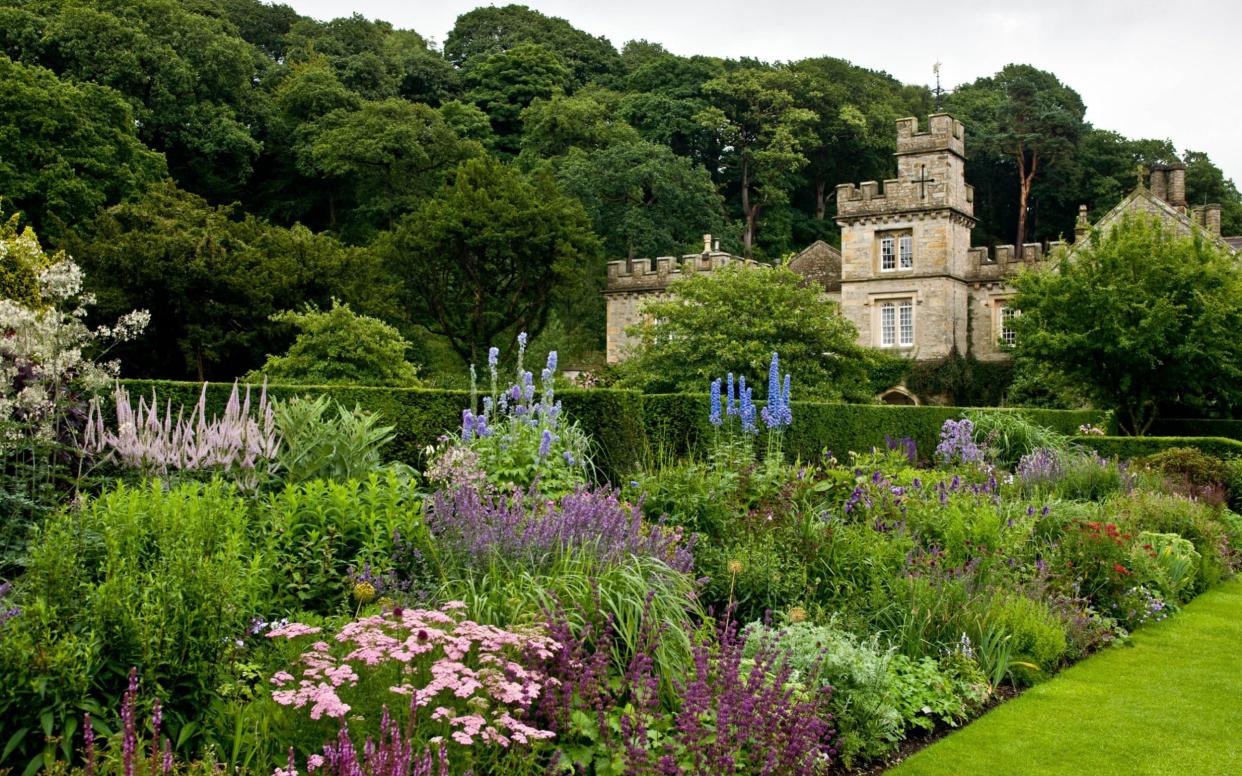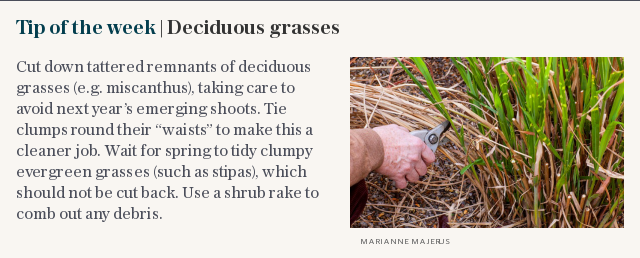Helen Yemm: a trip to the Lake District, shrubs for pots, how to get a Christmas cactus to rebloom

Allow me to transport you for a few moments from the chilly, joyless rigours of January gardening to thoughts of lazy days of horticultural hedonism in the Lake District. I shall be hosting a tour led by Sophie Piebenga to some stunning Cumbrian gardens, Sept 21-24.
From a charming base of four-star luxury at The Lakeside Hotel on the shores of Windermere, we shall visit some truly fine gardens in the region, with guidance from their owners or head gardeners. Some are much- photographed and on the not-to-be-missed list – such as the glorious and quirky topiary of Levens Hall and the grandeur of Lord and Lady Cavendish’s Holker Hall – although the real thing surpasses expectations. Another such is the voluptuously planted acreage of Italian-born garden designer Lady Arabella Lennox-Boyd at Gresgarth Hall.
As always on our tours, we delight in introducing readers to places that are less well-known: Chapelside is a one-acre, atmospheric and beautifully planted garden, with a beck, wrapped around an 18th-century farmhouse and surrounded by Lakeland wilderness. We will visit a small specialist nursery, Abi and Tom’s Garden Plants, where the passionate plant-loving owners eat, sleep, breathe and sell (mostly) perennials they propagate themselves.
We will take a boat trip up Windermere to visit Windy Hall, David Kinsman and Diane Hewitt’s high, fellside smallholding with a lovely, mossy, shrubby woodland walk and a small, packed conservatory built into the hillside. There will be a touch of slightly eccentric drama, too: aided and abetted by the twin benefits of the Gulf Stream and a steep south-facing site, the gardens at Yewbarrow House are stuffed with exotic surprises. The tour starts at Lancaster station and I look forward immensely to seeing some of you there.
For further information, contact Boxwood Tours Ltd, Rhiw, Llanbedr, Gwynedd LL45 2NT (01341 241717; boxwoodtours.co.uk).

SEEING RED
We have bought two faux-lead pots (24in/60cm cubed) in which we want to grow matching shrubs or small trees, one on each side of a central window, to replace pyracantha bushes that became too large so were dug up. Can you suggest something that would be suitable for this north-facing position?
Ann Sturgeon – via email
Your picture showed a formal-looking house, the plaster pristine with new paint and with a deep rusty-red front door, the colour of which is a bit of a gift, really, from a planting point of view: my immediate thought was photinia, the russet new shoots of which would match the door pretty perfectly.
There is a new variety called Photinia fraseri ‘Little Red Robin’, smaller than the ubiquitous hedging variety. It can be bought as a half standard (which means it has a short trunk, less than 3ft high and a lollipop top). Keeping your pair in colourful shape would involve individually snipping off a little from shoot tips once, or maybe twice, during the growing season to encourage fresh red growth.
A further thought: light at the base of a north wall can be a problem. To maintain symmetry of the bushes, you should perhaps place the containers on low pot-trolleys (from garden centres) so that they can be turned or swapped over relatively painlessly. If you are a photinia-hater, however (and I know there are some), you could opt for a pair of standard variegated hollies – self-fertile, they reliably carry red winter berries.
CHRISTMAS CACTUS
I have been given a large and lovely red-flowered Christmas cactus. What do I do with it during the coming year to ensure that it flowers again?
Ruth Sheffield – via email
Christmas cactus (Schlumbergera x buckleyi) is a 19th-century European-bred hybrid of two species of epiphytes and rock dwellers that originate in the jungles of Brazil. To give it the best chance of performing again, do not put it in scorching sun. Find a place that is merely light and bright and for the next few months treat it as any other house plant, standing it on a saucer of barely damp gravel and watering sparingly when the compost is almost dry.
It will only need potting every other year in March, using John Innes No.2 with added grit to ensure perfect drainage. This year, when the warm summer nights start (around late May/early June), tuck your plant outdoors somewhere, again avoiding full sun, bringing it indoors in September for a resting, totally dry period. When tiny buds appear along the edges of its fleshy leaves in early November, start watering it again.


